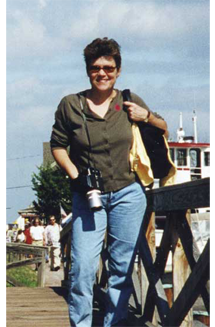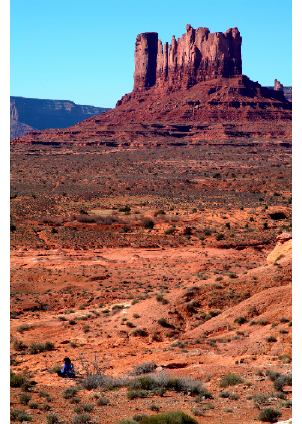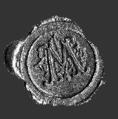I have always thought that if I can stop any viewer long enough to create in the viewer’s mind questioning and curiosity about my work, then I have made a successful image. To wonder and seek a deeper meaning is a beautiful process.
I am a storyteller. I tell stories primarily with images; I sometimes use text. In this Web site I will try to give some background to the images and the process of their creation. The Web site is a visual journey as much as, if not more than, a written document.
I am influenced by my experiences, people whom I meet, and places that I visit. I have traveled to many places all over the world and have been struck by the vast differences as well as the similarities in people. I think we are all connected in some way. I have many interests and practice many artistic disciplines. My work ranges from fine art painting and photography to crafts and furniture design. I seem to be the type who gets bored easily and needs to do many different things at the same time. The experimentation that I take in each medium I work in helps keep my mind active. I have explored new ways of communicating through creating. Some of the work has been expressed through presentations, workshops, and teaching in a classroom.
Craft and technique are important to me but seem to be playing a secondary role to my creative side and my need to create something that has meaning or purpose. Art has a natural sensibility that speaks to a place within me which is deeper than the intellectual level. Let's call it the place of the heart. The mind gets in the way and fights with the heart sometimes. I can discuss an image or painting at length and talk about who influenced me and why I made artistic decisions, but it is the whys and whats of the meaning of the work that are most relevant. Sometimes those whys and whats are elusive. It is very important to me that any viewer experiencing my art understands it. Why create something if it is not understood?
 Should meaning be the driving force behind the creation of art? Can meaning be found once the art is created and shown, after feedback? I think it can. Sometimes I create with intent and meaning intact, and at other times I create for aesthetic reasons only. There is very little understanding to the work until it is birthed. This is not to say that I have no concept brewing somewhere in the depths of my being, but rather to say that the concept works itself out through the process of creating. One style of creating is not better or more liberating than the other; the different styles are just driven by different forces. In order to create, I need to find that place where I am able to work through that process. Most important, I need to keep working and not get caught up in the whys. Should meaning be the driving force behind the creation of art? Can meaning be found once the art is created and shown, after feedback? I think it can. Sometimes I create with intent and meaning intact, and at other times I create for aesthetic reasons only. There is very little understanding to the work until it is birthed. This is not to say that I have no concept brewing somewhere in the depths of my being, but rather to say that the concept works itself out through the process of creating. One style of creating is not better or more liberating than the other; the different styles are just driven by different forces. In order to create, I need to find that place where I am able to work through that process. Most important, I need to keep working and not get caught up in the whys.
When I was about nine, I picked up a Kodak Brownie, a two-and-a-quarter film camera, and began taking photographs. It seemed like a natural step for me as I had watched my mom and grandmother take photos all of my life. The small box camera fit perfectly in my small hands and the rhythm of the crank wind system appealed to my mechanical intuition. I loved the sound of the shutter release and crunching of the film as it flapped past the dark internal rollers to expose the next frame and ready itself for a new exposure. As I peered down into the top of the camera, I could see the world in front of me without any of my subjects knowing that I was looking at them. The camera’s twin lens reflex system was unassuming and a
non-confrontational way to see the world. I made a connection with what I saw on the camera’s ground glass and what I saw in my mind’s eye. It was 1965, money was tight for my parents, and I was discouraged from spending needed money on something expensive like photography.
Eight years later, after graduating from high school, I bought a Canon FTb 35 mm camera with a 50 mm lens. I was working on the carnival every summer and had the money to shoot and process the film. It was 1974. This camera began my love affair with photography. The 35 mm camera was a single lens reflex (SLR), which meant what you saw through the camera’s eyepiece was exactly what the camera would record. I realized that using this camera allowed me to have a voice. I recorded landscapes, cityscapes, carnival rides, and other inanimate objects. It felt like I was using the camera as a record-keeping device. I learned later, when studying photography at the Rochester Institute of Technology (RIT), that photography was perceived in its early period as being merely a record-keeping device. Now, some thirty years later, I see the images I recorded at that time were much more than records of a scene. Rarely did those images include people. This said something in and of itself. Those early images revealed my intuitive sense for framing and composition. When I did photograph people, I perceived them as “snapshots” and without much value beyond a personal experience. I have not always excluded people from my photographs, only in some cases, for example, in a landscape where the voice and beauty of the land needed to be heard. People are so loud. When a person is included in a photograph, the viewer wonders who that person is, what that person is doing, and why that person is in that place. People are visually distracting and confuse the message in the peaceful scenes that I photograph. One idea or concept must dominate the other; it is either the landscape or the person(s).
 I recall a photograph that I shot of an American Indian woman sitting quietly in the Arizona landscape. Monument Valley was looming enormously in the background. The woman was very small in the bottom left frame of my image. Her persona was still and quiet; she was meditating. Her back was facing the camera. Because of her small size, her positioning, and her placement in the frame, she became part of the landscape and not a dominant figure. I recall a photograph that I shot of an American Indian woman sitting quietly in the Arizona landscape. Monument Valley was looming enormously in the background. The woman was very small in the bottom left frame of my image. Her persona was still and quiet; she was meditating. Her back was facing the camera. Because of her small size, her positioning, and her placement in the frame, she became part of the landscape and not a dominant figure.
That worked.
I was taught to be quiet as a child (“to be seen and not heard”). This, along with a reading and learning disability, gave birth to my visual creative side. I did not find myself absorbed by novels whose stories took some of my peers to other places and worlds. We did not own a television set. Instead, I watched people and learned a great deal about human nature. I saw deeper things in them, things that were not on the surface. I could see meaning and stories in their facial expressions. When I began to photograph, capturing those moments and putting people on film felt very revealing, like I had peered into their naked place and had stolen something from them.
Between the ages of 17 and 25 I realized that I did not have much knowledge about the technical side of photography. I took photographs as a hobby, selling a few here and there. I knew enough to line up the circle with the line within the camera’s viewfinder to achieve the proper exposure. That was the extent of my knowledge. I did not fully understand what f/stops, shutter speeds, or ASA were when I began studying at RIT. I began thinking about photography as a career. RIT was a rude awakening. It couldn’t have taken me further away from my intuitive visual side. I became consumed with technique, as did my classmates. We were technicians more than artists, despite the fact that we were earning a bachelor’s degree in fine art. RIT is known for its technical strengths, and this is what I thought I wanted. Looking back, I see that I have an amazing foundation in the field and a greater knowledge about technique than others. While at RIT, I also received an associate’s degree in science due to the chemistry and math requirements in the field. We mixed our own chemicals, producing paper emulsions in the development process. We learned how the silver
halides react to the developer and that the reaction depends on which developer is being used. We read the densities of the processed film emulsions with a densitometer and charted characteristic curves from those readings. All of this prepared me for a career as a commercial photographer. Creative and experimental work was not stressed.
During my summers, while I was away from school, I worked and traveled with the carnival. I stayed with the same show for approximately ten years. I became extremely familiar with the returning workers and photographed the carnival and the carneys significantly. I used a 35 mm camera as well as a Rolleiflex camera, which I had inherited from my mom. The Rolli worked the same way as the Brownie that I had used as a kid. This camera was more sophisticated and flipped the image upside down and backward for proper viewing. You looked down through the top of the camera to see the image frame and not directly behind the camera body. Once again I could choose to be discreet when taking photographs.
After graduating from RIT in 1984, I became a commercial photographer. I owned and operated a photographic advertising studio in Rochester, New York. The business was in my home where I had converted the top floor into a studio space. Mainly, I did location work shooting for annual reports, point of purchase, direct mail, and other advertising vehicles. I was also recognized as one of the leading architectural photographers in Rochester, photographing buildings designed by regional architects. My work was published internationally. I liked shooting architecture more than any of the other work that I did at that time because I found it to be straightforward imagery and very technical. Architectural photography reminds me of the tactile experience in craft and furniture design and construct. When shooting the architectural work, I became proficient in my camera technique. I used a large-format (4” x 5”) camera and a medium-format (2 and 1/4) camera. The large-format camera with its tilts and swings seemed to justify the years that I spent at RIT and the student loans that I was now paying back. The year 1989 was a very good year for my commercial business. Things were picking up for me in the architectural area and I was securing some solid repeat customers. I had extra money at that time and was able to do some renovating in my spare time. I enjoyed creating and building my space. During the work, a three-foot-long, three-inch-round cast-iron pipe fell out from the ceiling. The pipe landed on my head. Shortly after that I began having seizures. Several of the doctors that I went to had no idea what was wrong with me. One of them, a seizure specialist, told me that I should not drive any more. I should be seizure-free for one year before I got behind the wheel of a car. I might have ignored this except I had a seizure while driving. I crossed six lanes of traffic and ended up under a tractor-trailer. I could have been decapitated, but the impact had been stopped by the brace on the car’s window shield. I had no idea what had happened except that my sister happened to be following me in her car and saw the whole thing. This added a whole new twist to my life. My business was completely dependent on my driving to interviews, which I did about four times a week, and to job locations. I moved to the New York City area where a car was not needed, or so I thought. The medicines that I was taking for the seizures made me lethargic and unable to think clearly. Even though I had these obstacles in front of me, I continued working on a series of images that I had started before I had gotten sick (Hand-Painted Images). This work gave me a way to express my inner confusion and creative freedom. I also worked with the computer during that time. I bought my first Mac in 1991 and was in need of an upgrade in 1994 when I took a few classes at a local university. The computer appealed to me; it felt natural to work with this tool. I excelled with it and learned as much as I could on my own. I took two graphic design classes and got a job locally as a graphic designer. I was driving again, and the seizures that had held me back for a time were now gone. I was back into technology and I put aside my hand-painted art. After one and a half years I left the graphic designer job and started designing and writing a Web site that teaches photography using online classes (Photo Tips and Tricks). After about six months, I was offered a teaching position at Monmouth University where I worked for six years. They were revamping their photography department and needed someone with the experience and background to create a curriculum, run the photo lab, and teach the classes.
Several students worked for me in the two labs that I ran. While I was there I pursued and earned an MA degree. I also applied and earned an MFA-IA from Goddard College. This program seemed to fit into my schedule of teaching and of caring for my sick parents, who may have needed my assistance at any time. After completing my degree program I decided that I wanted to work full time on my art and teach classes here and there, perhaps doing some workshops and seminars from time to time.
These life experiences have informed my decisions to create art. The sections of my Web site on the left should better inform you about my creative process and my thoughts behind the creation of the work. Images will be shown to describe my process.
Melanie
|



 I recall a photograph that I shot of an American Indian woman sitting quietly in the Arizona landscape. Monument Valley was looming enormously in the background. The woman was very small in the bottom left frame of my image. Her persona was still and quiet; she was meditating. Her back was facing the camera. Because of her small size, her positioning, and her placement in the frame, she became part of the landscape and not a dominant figure.
I recall a photograph that I shot of an American Indian woman sitting quietly in the Arizona landscape. Monument Valley was looming enormously in the background. The woman was very small in the bottom left frame of my image. Her persona was still and quiet; she was meditating. Her back was facing the camera. Because of her small size, her positioning, and her placement in the frame, she became part of the landscape and not a dominant figure.